
The Ford Kuga Hybrid gives you the impression of a car that doesn’t try to be the best at everything but strives to be the best version of itself. Like a chameleon, this crossover can adapt to your lifestyle without losing its own character. And this is perhaps its main advantage over its competitors.
The latest updates from Ford have given the Kuga such advantages that have significantly increased its chances of attracting fans who previously chose between the VW Tiguan and Toyota RAV4. It has more character than before. To a lesser extent due to the changed optics, bumpers, and wheels, and to a greater extent due to the multimedia upgrade and the transition to the “green” side.
During the first meeting, the updated Ford Kuga Hybrid seemed to speak: “Here is a crossover that knows everything about itself and it will quickly win your heart.” Not just a car, but a real conversationalist, ready to share its secrets and accept all your hidden sides. All you have to do is listen.
Content
Conservative classics
“Look at me carefully,” the Ford Kuga Hybrid seems to be saying with its new headlights with an integrated LED strip. Indeed, the matrix optics don’t just illuminate the road — they engage in a dialog with the asphalt and the world around them. It’s not just superficial communication but in-depth analysis: careful escort of oncoming traffic with isolation of excess light full illumination of the roadside and pedestrians in dark corners. Only such care will be inherent in the top-end ST-Line Plus trim, while everyone else will get only regular adaptive light and cornering lights.
The front end has become more expressive after the upgrade, but without being too aggressive. The diode stripe emphasizes adulthood and modernity, with LED headlights with the same interesting illumination behind. And here I just remembered VW Tiguan. They are very similar in style. But the body of the Ford Kuga Hybrid looks more like a Porsche Macan. Only the overall image remains classic for Kuga and does not distinguish the car in the stream. Such a smoothed, conservative style is for fans of modernity.

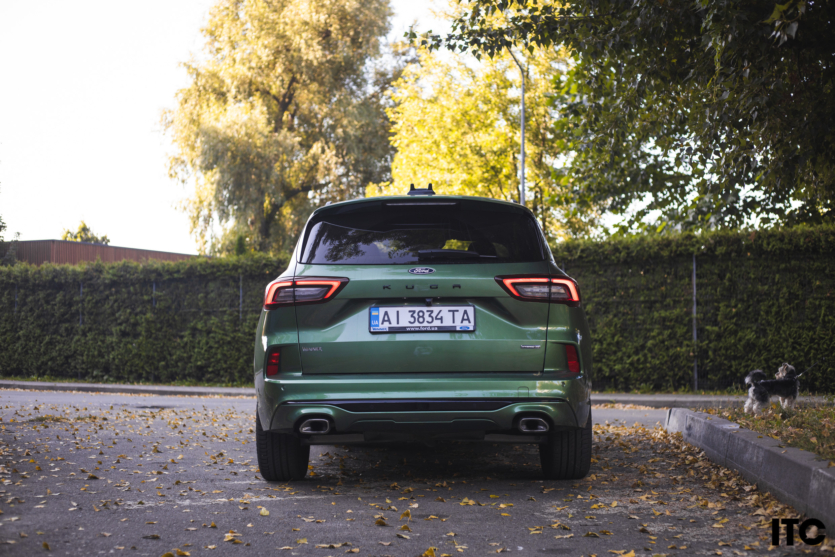
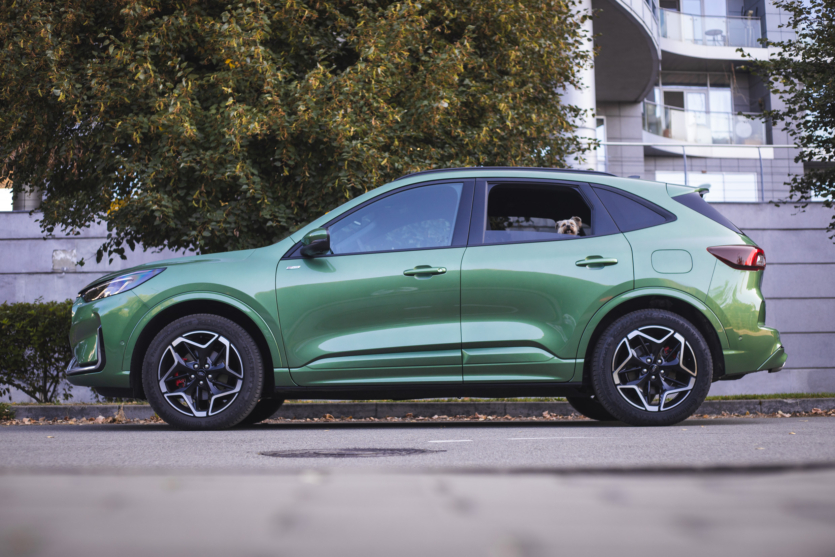

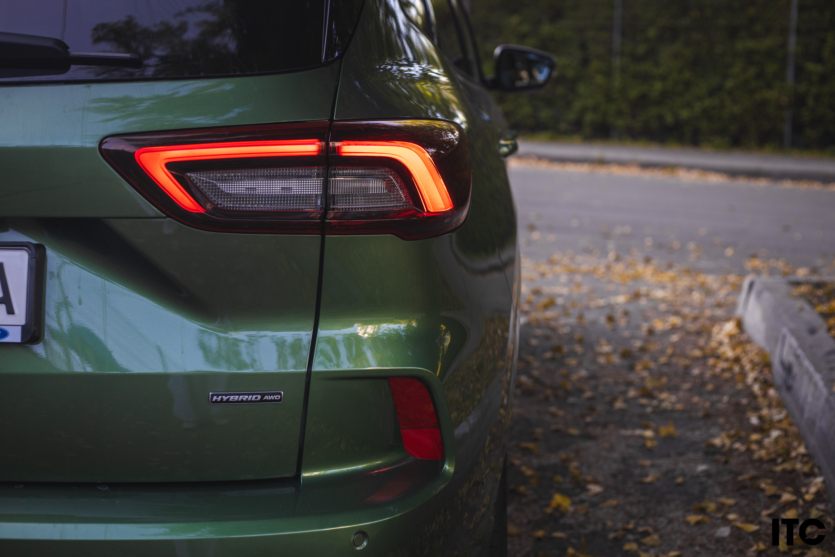
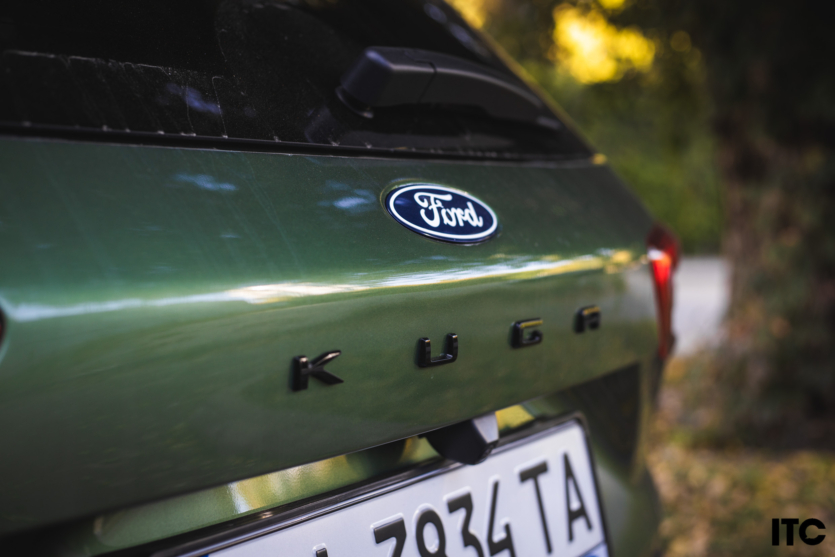
The bright herbal green color adds a bit of charm. In cloudy weather, it will delight you with its freshness and richness, and in winter it will remind you of spring. Personally, I really like this trend of manufacturers to add unusual colors to the range of black, white and gray shades.
The fresh 19-inch wheels on the ST-Line X Plus emphasize the sporty character without shouting it out. “I am stylish but not intrusive” is the exact design philosophy of this version. And it really does look quite restrained on the road, and next to a Peugeot 3008 or Hyundai Tucson, it will even seem boring.
Only this style will find many fans, and maybe even more than the expressive Peugeot. Personally, I’m glad even that they just removed that extra horn when locking the car, which accompanied the representatives of the Ford model range for many years. Plus, keyless entry is quite comfortable here, but if the car opens by itself, it won’t lock on its own, and it’s worth remembering.
Hybrid heart with European temperament
This seems to be the most interesting chapter in the history of communication with the new Ford Kuga Hybrid. It not only marks the status of one of the best family crossovers but also has the audacity to delight the driver with driving ambitions. It’s easy to believe, though, because Ford has always been able to customize the handling and generally make interesting and fun cars, such as the Ford Focus. And let’s not forget the brand’s history in rally championships. So here, too, the engineers have worked hard to make their creation stand out from the competition.
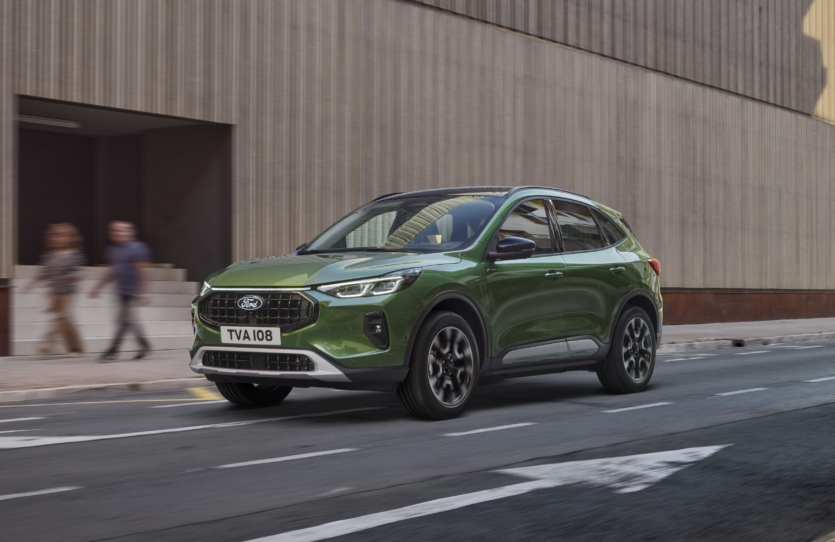 It looks like the “blue oval” is not so blue anymore. Ford is firmly on the path of environmental friendliness, and the steps are quite successful. It said goodbye to diesel engines and replaced them with hybrid versions and regular gasoline. And now they have added a rechargeable PHEV hybrid that has a range of about 69 km on electricity thanks to a 14 kWh battery.
It looks like the “blue oval” is not so blue anymore. Ford is firmly on the path of environmental friendliness, and the steps are quite successful. It said goodbye to diesel engines and replaced them with hybrid versions and regular gasoline. And now they have added a rechargeable PHEV hybrid that has a range of about 69 km on electricity thanks to a 14 kWh battery.
In my opinion, the best version that can fully reveal the character of the Ford Kuga is a parallel FHEV hybrid based on a 2.5-liter gasoline engine in the top ST-Line Plus trim. It is this model that is aimed at more sporty behavior has an elastic suspension that works quite hard on potholes. Partly because of the 19-inch wheels with low-profile tires, but it doesn’t add much comfort, especially for rear passengers. And this seems to be something new in the Kuga, as it used to be characterized by the most comfortable and careful handling.
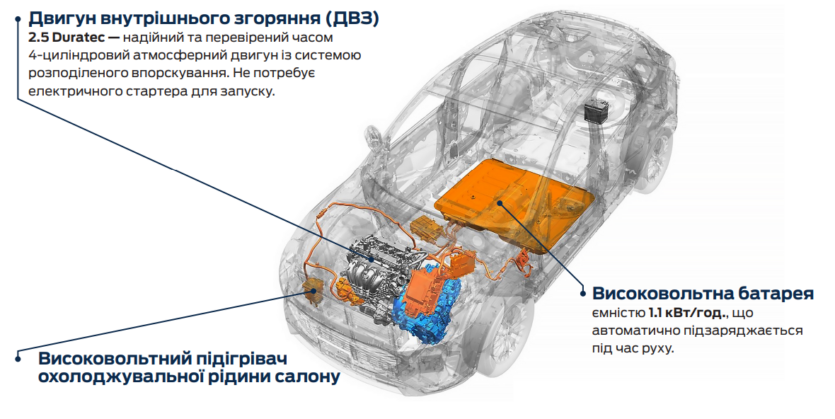

Under the hood is a 2.5-liter Atkinson-cycle engine paired with an electric motor. The total power of the FHEV version is 183 hp, which allows it to accelerate to 100 km/h in 8.3 seconds.
The Ford Kuga Hybrid handles perfectly, turning into corners with ease and behaving predictably at speed. The 183 hp is more than enough power to meet your needs, and the electric motors that spin the wheels guarantee instant acceleration. The torque is regulated by an eCVT, similar to Toyota’s.
The principle of operation of the parallel hybrid system is also very similar to the Japanese one, and Ford has not yet come up with anything extraordinary. Thanks to the operation algorithms, good recovery, and driving on electricity even at speed, fuel economy is significant. The large crossover can keep within 5.1-6.2 liters per 100 km in mixed mode, and if you drive more in the city and traffic jams, you can save even more.
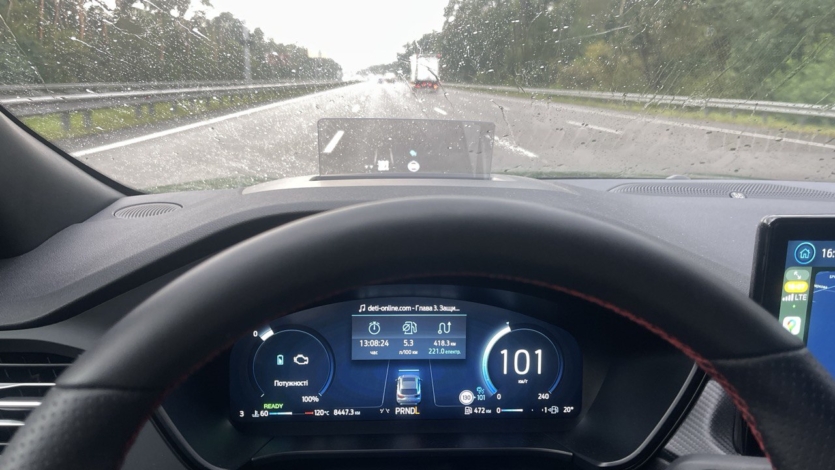
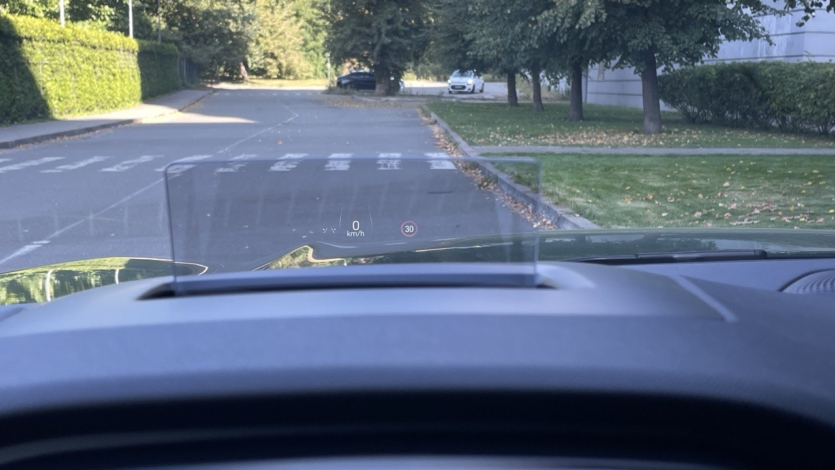

Kuga doesn’t just save fuel; it changes the way you drive. And it is true. The system is so well-balanced that the transitions between electric and gasoline modes are almost imperceptible. The 13-inch dashboard is not overloaded with unnecessary graphics, and you can only notice the switching by the color change on the engine and battery icons. There is a scale of economic driving and an on-board computer.
You can customize the Ford Kuga Hybrid dashboard to your liking, but within a limited framework. A small but functional projection display works much more effectively here. It would be even better if it were made into a full glass projection. But it displays a lot of important data, has bright colors, graphics, and is controlled by the settings in the on-board computer.
I like to play with the driving modes in the Ford Kuga. They really change the feel of the steering wheel, the accelerator seems to become sharper, and the gearbox revs up in Sport mode. Or, on the contrary, the battery is turned on, regeneration is enhanced, and the steering wheel becomes softer and smoother when you switch to Eco mode. For the most part, Normal copes with all the tasks, but sometimes it’s nice to add an accent.
Given that we have two electric motors in the hybrid, they guarantee the operation of the all-wheel drive by controlling the torque instead of the clutch. Of course, this is not an off-road vehicle, and you should be careful when driving in mud and sand. It will go no further than the front-wheel drive version under the control of an experienced driver. However, the Snow mode guarantees more stable behavior on the road in difficult weather conditions and more predictable driving.
 There is also an additional mode in the L box, which allows you to drive almost in one pedal, significantly enhancing the recovery and use of the electric drive. It’s a handy thing when pushing in traffic, when you can hardly move your foot from pedal to pedal.
There is also an additional mode in the L box, which allows you to drive almost in one pedal, significantly enhancing the recovery and use of the electric drive. It’s a handy thing when pushing in traffic, when you can hardly move your foot from pedal to pedal.
Maximum care
In traffic jams, it is convenient to use adaptive cruise control, which can fully start moving, brake, and keep a set distance from the previous cars. The system monitors the environment and warns you of danger. It won’t let you relax too much, though, because it will regularly remind you to keep your hands on the wheel and your eyes on the road.
It is no less helpful when driving on the highway, keeping the car in the middle of the lane, and controlling the distance and speed. It’s really nice how the system works, being unobtrusively present at all times and unobtrusively protecting you from surprises.
Of course, there are also all the necessary systems to help you move uphill, blind spot warning, traffic stabilization, and more. And if adaptive cruise, projection display, and matrix headlights are the advantage of the top trims, all other auxiliary systems are available from the start.
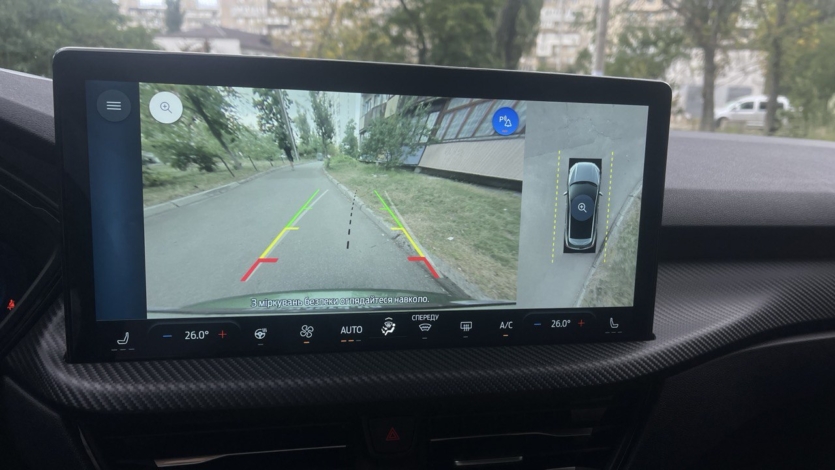

Although the surround view cameras are not of high quality, they do a good job. They provide a high-quality image that can be zoomed in on, as well as a closer look at the surrounding situation from different angles, bringing the areas of difficult areas closer. And the apogee of assistance is an active parking assistant: the system can be turned on with a separate button and will look for a suitable parking space and park the car itself. This is a super bonus for those who are always afraid of parking.
Salon: technology in dialog with comfort
In addition to all the features and impressions, the Ford Kuga Hybrid has one of the most comfortable interiors in the class. Only here its identity is lost a bit, and if you cover the logo on the steering wheel, it will not be easy to determine which car you are driving. It seems that here, like in the Ford Puma, they saved a lot on materials. Today, even the Chinese from MG offer more pleasant to the touch surfaces than Ford. And there is nothing fancy or special about the architecture. It’s simple, laconic, and conservative. It seems that’s what we were betting on.
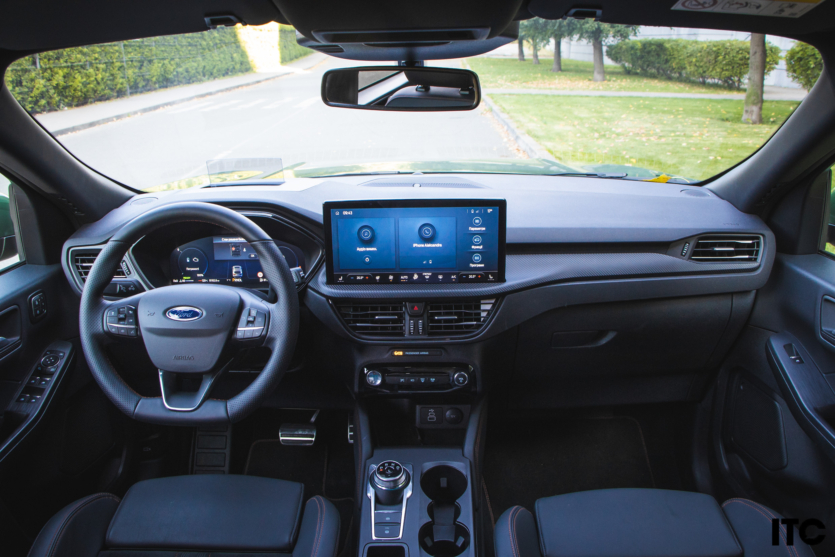
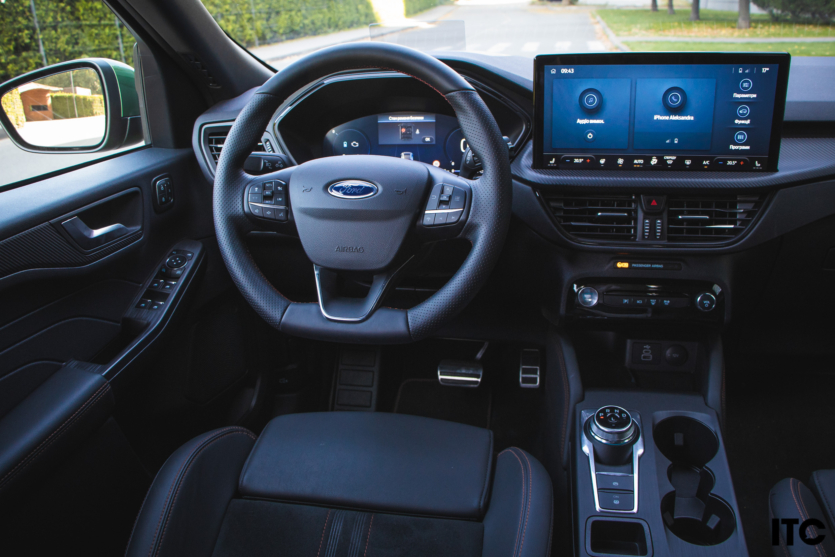
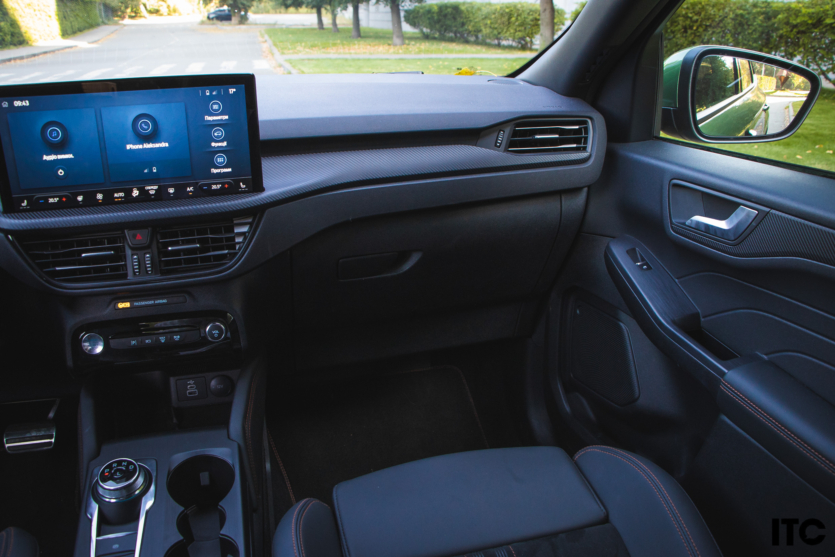
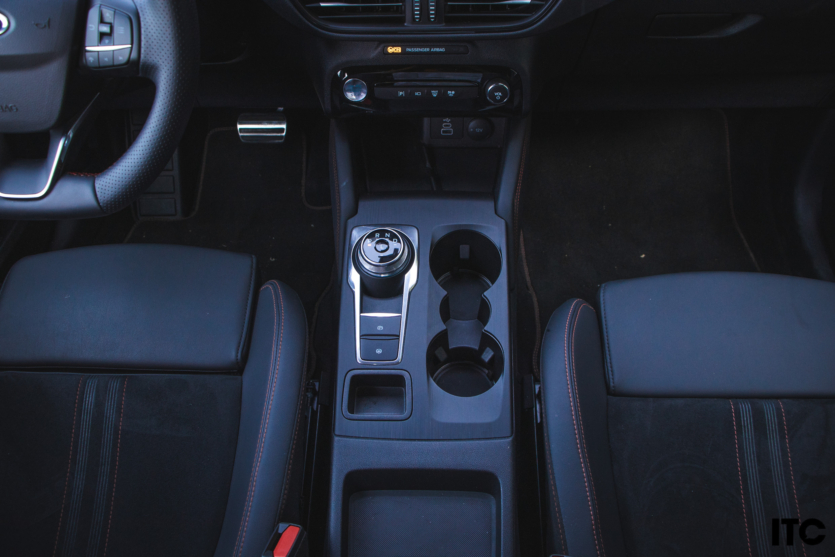
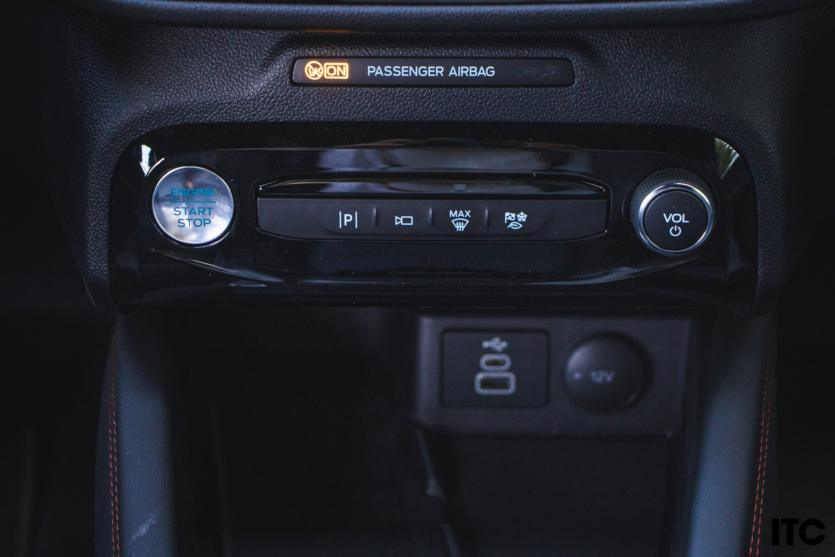
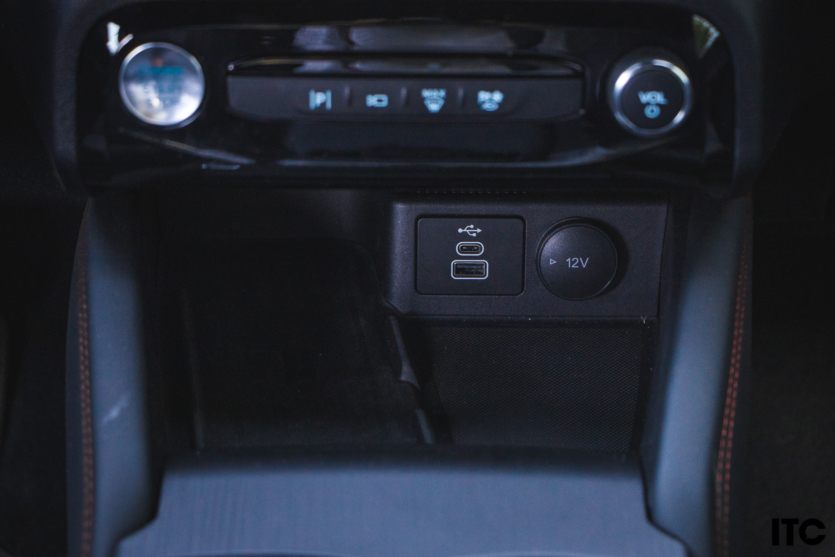
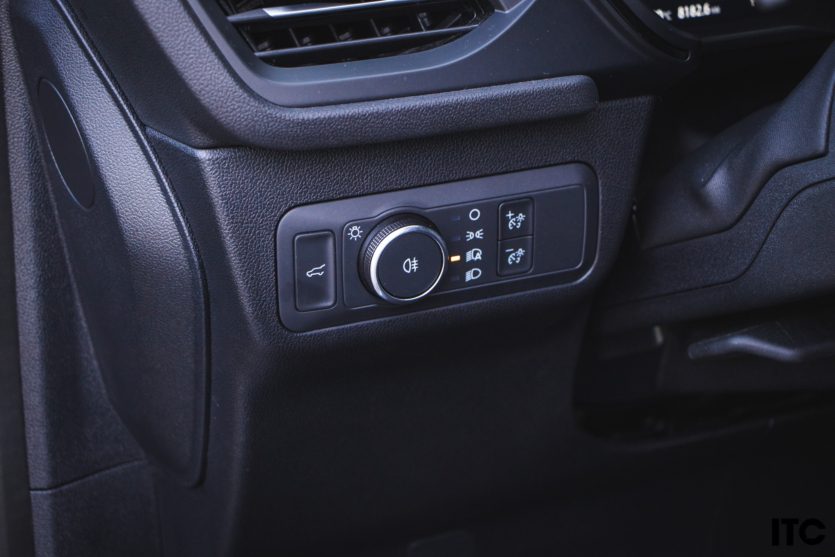

The design in the Hyundai Tucson, not to mention the Peugeot 3008. And the VW Tiguan somehow has more interesting things and designers’ work, from the lighting to the location of small storage containers. However, the Kuga, with its conservatism, remains at the top of European sales precisely because of its restrained style, practicality, and comfort. There is everything for convenience: many small pockets, retractable knee rests that extend the seats, seat settings in all directions, heated steering wheel, seats, and even the rear seats.
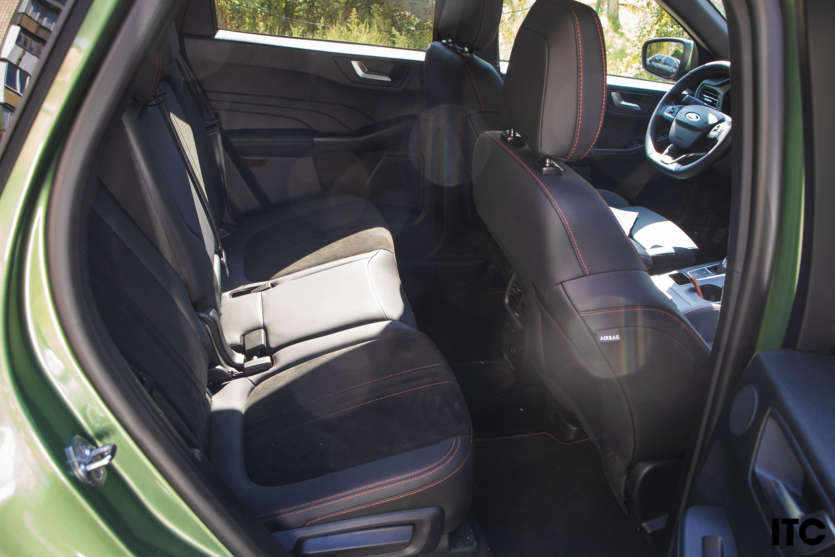

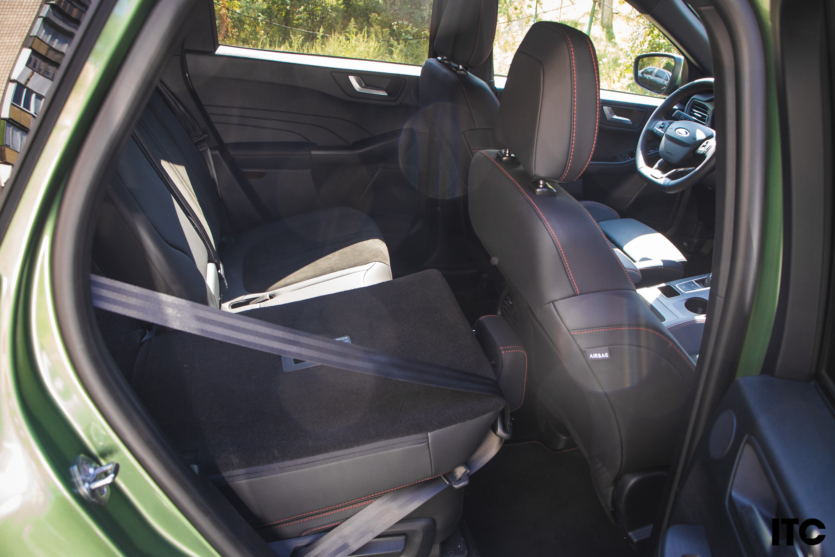
And now Ford has added movement for the rear row. You can change the inclination of the sofa backrests and move individual parts, which was not the case with the predecessor. And this is without reference to the configuration.
Despite its love of classic values, this car can speak a modern language. Now there is a 13.2-inch screen with SYNC 4, which replaced the modest 8-inch monitor of its predecessor. Modern software of the latest generation has clear algorithms, quick access to all functions and allows you not to get confused in the maze of settings, as it happens in VW Tiguan.
Wireless smartphone connectivity will be available in any configuration, and the connection is fast and strong. But wireless charging is the prerogative of the top versions, but it’s not much use. It maintains the charge in the phone rather than charging it, and sometimes you have to connect it via a wire. It’s a good thing they left a simple USB connector along with the modern Type-C.
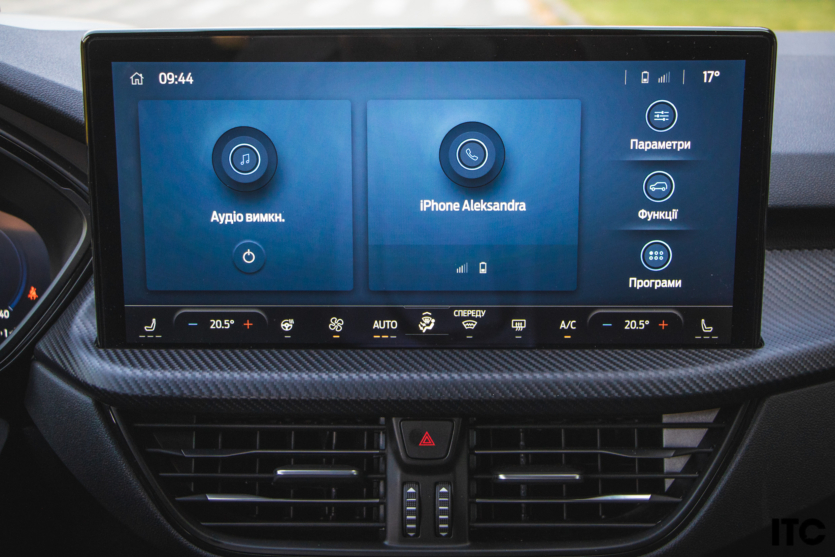 The climate control was moved to the monitor, but a separate lower panel was allocated, which left the controls easy to use. The Ford Kuga has a two-zone climate that does a good job even in automatic mode.
The climate control was moved to the monitor, but a separate lower panel was allocated, which left the controls easy to use. The Ford Kuga has a two-zone climate that does a good job even in automatic mode.
The AGR sport seats in eco-leather and suede with red stitching in the ST-Line X Plus with 12-way electric adjustment ensure a comfortable fit. Conventional upholstery and less comfortable seats with mechanical controls will be available in the initial Titanium and Titanium Plus trims. For the top versions, the premium Bang & Olufsen system with 10 speakers has been retained, which creates a special atmosphere in the cabin and allows you to fully enjoy the music. Combined with good noise insulation, this creates an atmosphere of comfort without excessive pomp.
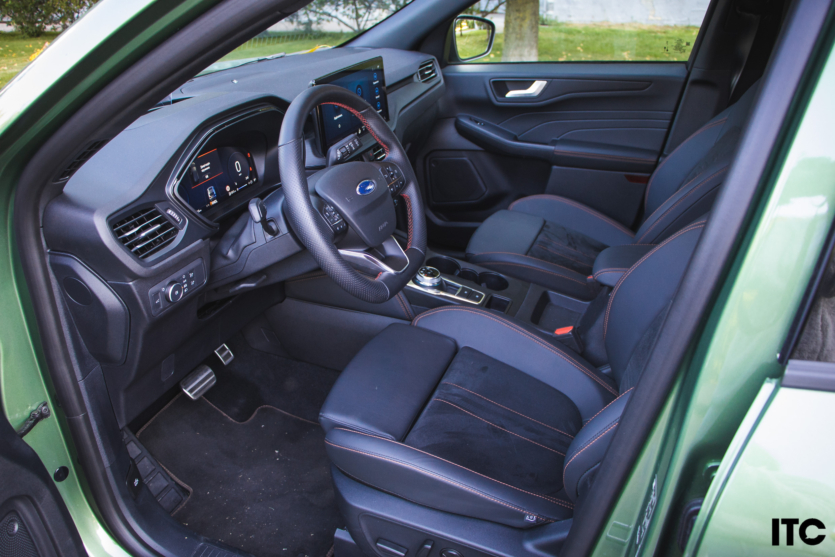 The only thing that Ford has left unchanged and recognizable is the door slam. For some reason, they still close like doors to an old entranceway. Even though there is an additional sliding part that protects the door when it is opened. It seems like a small thing, but it’s quite significant.
The only thing that Ford has left unchanged and recognizable is the door slam. For some reason, they still close like doors to an old entranceway. Even though there is an additional sliding part that protects the door when it is opened. It seems like a small thing, but it’s quite significant.
Space: more than it seems
Despite the fact that the Ford Kuga Hybrid is the largest in the class in terms of size, there is not as much space behind as you might expect. Here, the space is divided between passengers and the luggage compartment. As a result, the trunk is almost as large as in the Tiguan (652 liters) and offers from 475 to 553 liters (depending on the position of the rear seats), a roll cage under the floor with tools. The rear sofa seats can be easily folded out of the trunk, have lights and nets, and the upper shelf is padded and attached to the rear window. If necessary, it can be easily folded down without losing storage space.
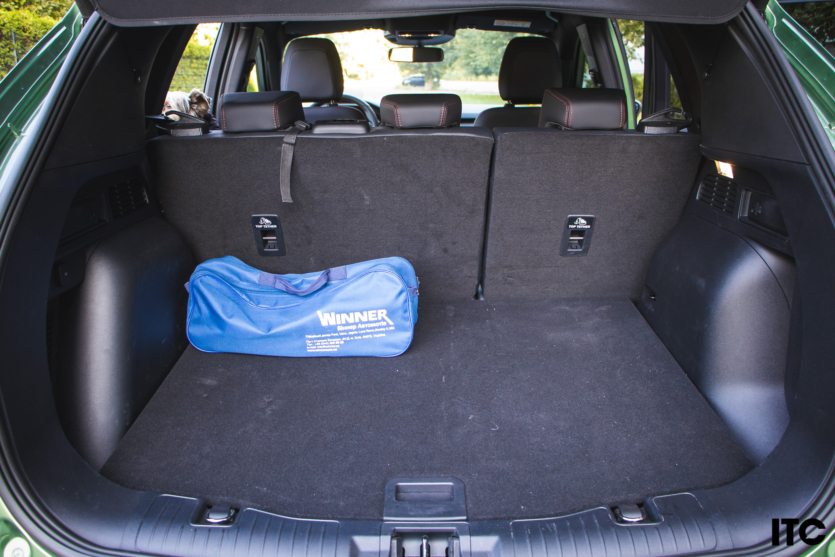
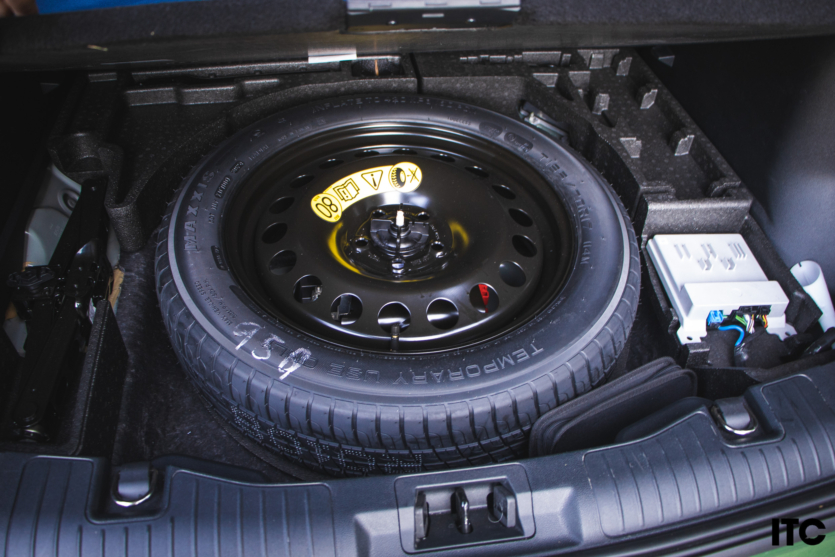

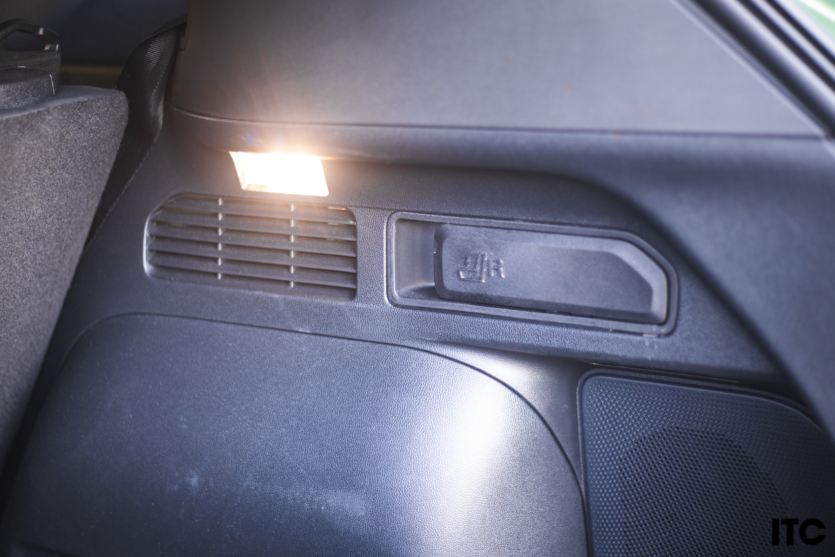
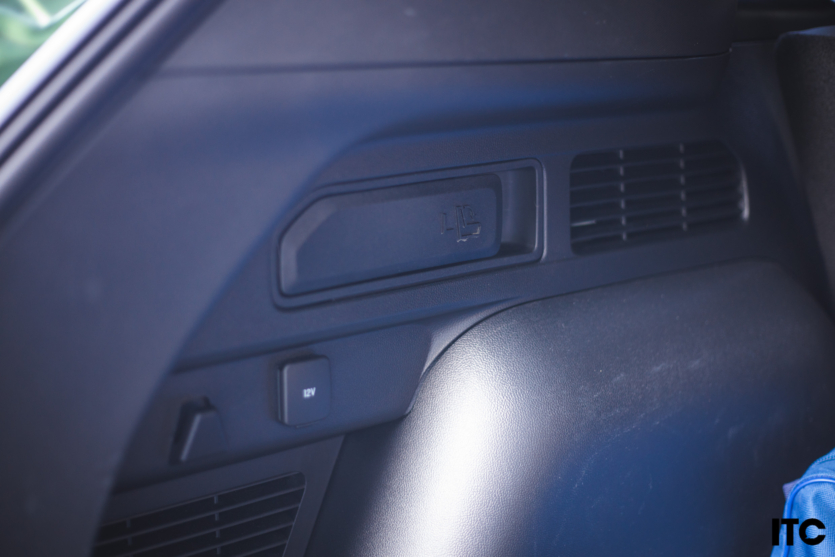
When the second-row seats are slid down, up to 140 liters of additional luggage space is available. And the folded backrests create an almost flat base. Sleeping may be uncomfortable, but you can easily transport bulky items.
Moreover, the Kuga has the highest towing capacity in its class. So you can load the trunk and transport a trailer with a boat weighing 2,100 kg. This is more than many competitors, including higher-end models. For a family crossover with a hybrid powertrain, this is truly amazing.
Despite the sporty body profile, there is enough space even for adult passengers. You can’t get your head over the backrest, and you can adjust the length as well. The two parts of the sofa are heated, and there are air outlets as well as outlets for charging gadgets. Everything you need for traveling seems to be present.
Conclusions and positioning
Ford has once again proven that it knows how to make cars for drivers, not for designers or hipsters. Everything is at hand, everything is logical, and everything works as you expect. Convenient, comfortable, driving and not without pleasure. Despite the fact that sometimes you can see the savings, the manufacturer offered the maximum functions and technologies at a competitive price. And if you put the Ford Kuga alongside the VW Tiguan in terms of trim and drive, the competition is fascinating.
The German is more refined, softer, and with an outdated diesel engine, while Ford offers a more economical system, more technology-rich equipment, and more driving pleasure. And their prices are close to each other: UAH 1,883,672 versus UAH 1,885,040 for Ford. And here you have to choose with your heart and emotions.
Overall, the modern Ford Kuga demonstrates a unique approach. Where German crossovers offer premiumity, Japanese crossovers offer reliability, and Japanese and Korean crossovers offer eccentricity, Ford offers balance with an emphasis on driving experience. This is especially noticeable in hybrid versions, where competitors often sacrifice dynamics for economy, and the Kuga maintains a balance between efficiency and emotion.
PROS: controllability, balanced performance, economy, practicality.
CONS: The quality of materials and noise insulation could be better.
| Characteristics | Ford Kuga | VW Tiguan | Toyota RAV4 | Peugeot 3008 | Hyundai Tucson | Kia Sportage |
| Overall dimensions (mm) | ||||||
| Length | 4645 | 4539 | 4615 | 4447 | 4510 | 4540 |
| Width | 1882 | 1842 | 1865 | 1841 | 1865 | 1865 |
| Height | 1683 | 1656 | 1685 | 1620 | 1650 | 1645 |
| Wheelbase | 2711 | 2680 | 2690 | 2675 | 2680 | 2680 |
| Engine and transmission | ||||||
| Engine capacity (l) | 1.5 | 2.0 | 2.5 | 1,2 | 1.6 | 1.6 |
| Power (hp) | 183 | 150 | 222 | 136 | 215 | 136 |
| Engine type | FHEV hybrid | Diesel | FHEV hybrid | Gasoline/MHEV | Gasoline/MHEV | Diesel mhev |
| Dynamic characteristics | ||||||
| Acceleration 0-100 km/h (s) | 8,3 | 9.4 | 8.1 | 10,2 | 5 | 11,4 |
| Max. speed (km/h) | 195 | 207 | 180 | 201 | 185 | 180 |
| Efficiency and capacity | ||||||
| Fuel consumption (l/100 km) | 6.8 | 5.4 | 4.8 | 5,4 | 8,5 | 5,6 |
| Trunk volume (l) | 536 | 652 | 580 | 520 | 616 | 526 |
| Tank capacity (l) | 54 | 58 | 55 | 53 | 54 | 54 |
| Passability | ||||||
| Ground clearance (mm) | 168 | 180 | 190 | 155 | 180 | 180 |
| Cost | ||||||
| Basic version, UAH | 1 485 181 | 1 701 849 | 1 551 038 | 1 326 300 | 1 166 600 | 1 509 286 |
| Top version, UAH | 1 885 040 | 1 883 672 | 2 104 113 | 1 571 350 | 2 022 300 | 1 610 548 |

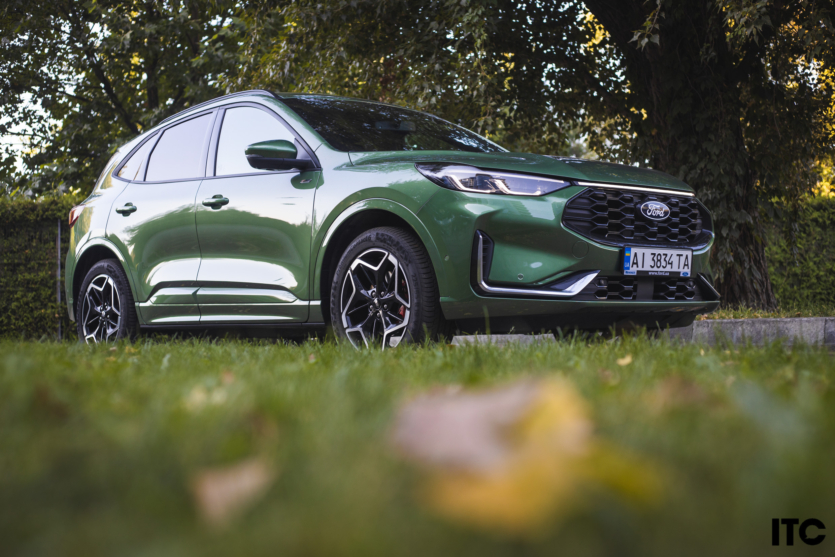
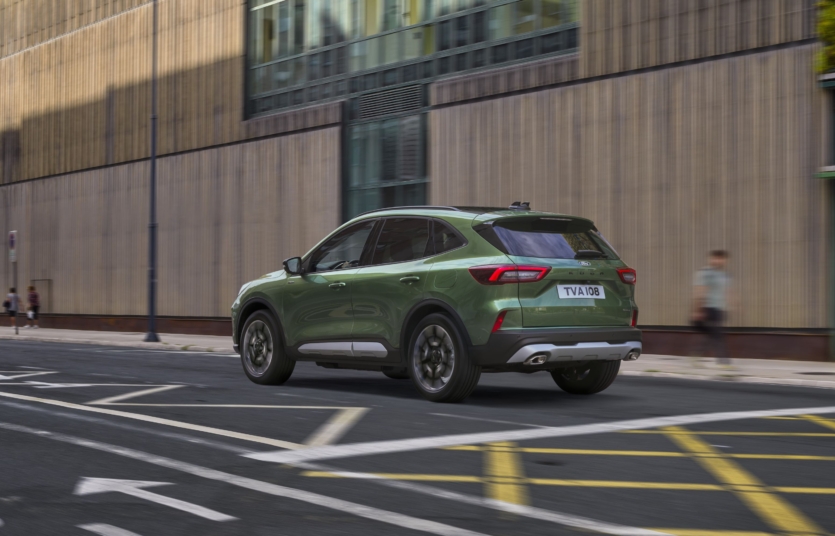
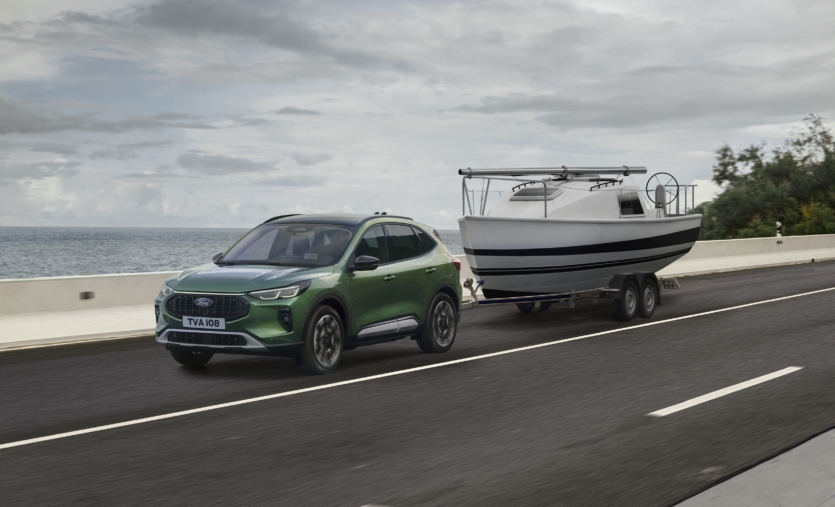
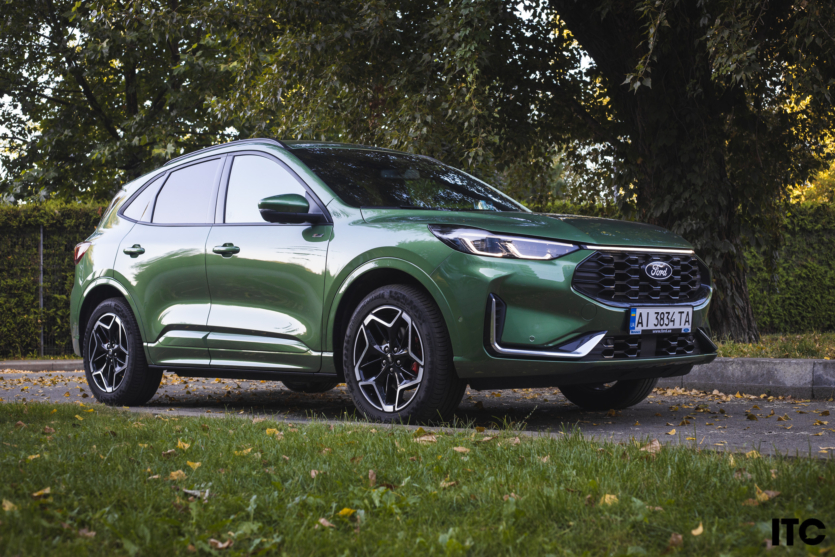
Spelling error report
The following text will be sent to our editors: